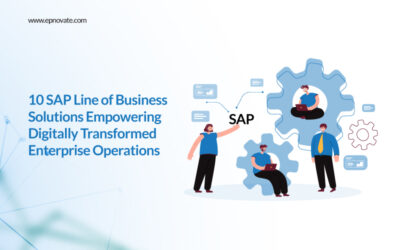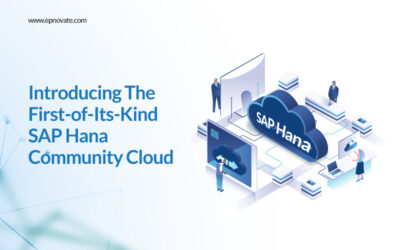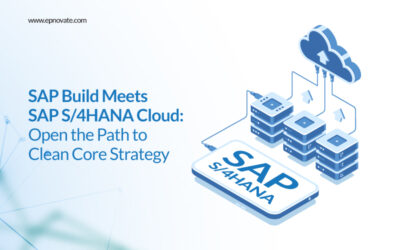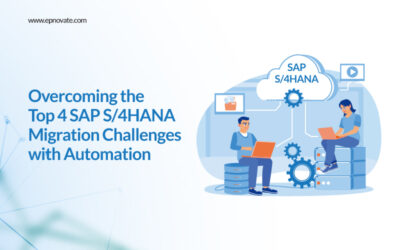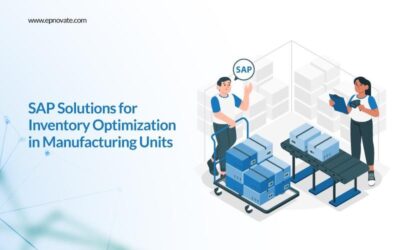Exploring the Power of SAP S/4HANA Public Cloud

It is very well observed that digital business is always changing, so staying ahead of the curve isn’t an option. Businesses are always looking for solutions that streamline operations and give them deep insights into their processes so they can make smarter decisions. With SAP S/4HANA Public Cloud, you can take advantage of the reliability of SAP with the flexibility of cloud computing.
Let’s dig deep into this blog to explore the robust analytics features of S/4 HANA Public Cloud and how supply chain optimization works.
How does SAP S4/HANA Public Cloud work?
Basically, SAP S/4 HANA Public Cloud is a comprehensive ERP solution built to handle the complexities of running a business. It is developed on the powerful S/4HANA database, which allows simplification of data models, no aggregates, and no redundancies. This means information is processed in real-time, providing businesses with the agility they need to respond to rapidly changing market conditions.
Understanding SAP S/4HANA Public Cloud Analytics:
SAP S/4 HANA Public Cloud is specially designed to deliver smart ERP solutions using machine learning, advanced analytics data, and the potential of the cloud. Its analytics proficiency facilitates organizations in improving processes, bringing innovations, and come-up with data-driven results.
Key Analytics Features:
S/4HANA services offer several key features to help companies optimize their operations and gain real-time insights. Some of the main features include:
Predictive Analytics:
Employing machine learning algorithms in S/4HANA Public Cloud provides predictive analytics. This allows businesses to predict upcoming trends, assign resources effectively, and identify potential risks.
Real-time Analytics:
This feature assists in obtaining real-time data, helping users get updated data, which is very important for companies to make quick and proactive decisions during changing market dynamics.
Advanced Reporting and Dashboards:
Customizable dashboards, comprehensive reporting tools, and rich visualizations enable users to analyze complex data sets effortlessly. Interactive and dynamic reports can give decision-makers an overall view of their business performance.
Embedded Analytics:
Analytics is seamlessly integrated into the S/4HANA application, freeing you from managing separate analytics tools. This ensures a unified user experience, with insights available during decision-making.
Example: Supply Chain Optimization
Let’s look below at what challenges are faced and how S/4HANA solutions help to optimize supply chain operations for a manufacturing company.
The Challenges
A manufacturing company may face the following challenges:
Stockouts:
Running out of stock for leading products affects on sales opportunities.
Excess Inventory:
Holding excessive inventory for slow-moving items, tying up capital and warehouse space.
Inefficient Order Fulfillment:
Delays in delivering customer orders and in processing, led to potential loss of business and poor customer satisfaction.
The SAP S4/HANA Solution
By practising S/4HANA service features, the company can valuably address these issues:
Predictive Demand Planning:
It has predictive analytics within S/4HANA that extract historical data, and external market situations and know the trends. This may allow it to forecast future demand. It will help to maintain production and make sure that products always remain in stock.
Real-time Inventory Monitoring:
To supervise real-time inventory across the supply chain to help reduce the overflow of inventory, ensure order fulfilment, and prevent stockouts.
Dynamic Dashboards for Operational Insights:
Executives manage dynamic and customizable dashboards that display key business performance and indexes. These dashboards help executives develop an understanding of their company and disclose order fulfilment rates and production efficiency, among other indicators. Thus, this increases decision-making power on the data presented to ensure the best optimal operational efficiency.
Embedded Analytics for Supplier Performance:
The company uses the analytics embedded in the S/4HANA interface to assess supplier performance and ranking data in one place. This information can help the firm identify its top suppliers, negotiate better terms, and regulate or remove unwanted vendors.
Conclusion:
SAP S/4HANA Public Cloud’s analytics have the power to represent a model that shifts business to equip data for strategic decision-making. Businesses can unlock new efficiency, agility, and competitiveness levels by seamlessly integrating analytics into ERP processes. The example of supply chain optimization illustrates the tangible benefits of leveraging S/4HANA Public Cloud’s analytics features in solving real-world business challenges. As organizations continue to navigate a data-driven world, S/4HANA Public Cloud stands as a strong bridge in securing the powerful and essential data of enterprise.
Recent Posts
- 10 SAP Line of Business Solutions Empowering Digitally Transformed Enterprise Operations
- Choosing the Right SAP Implementation Partner: What Businesses Need to Know
- How to Future-Proof Your SAP ERP
- SAP Operations Continuity: 5 Priorities You Need to Embrace Today
- Introducing The First-of-Its-Kind SAP HANA Community Cloud
